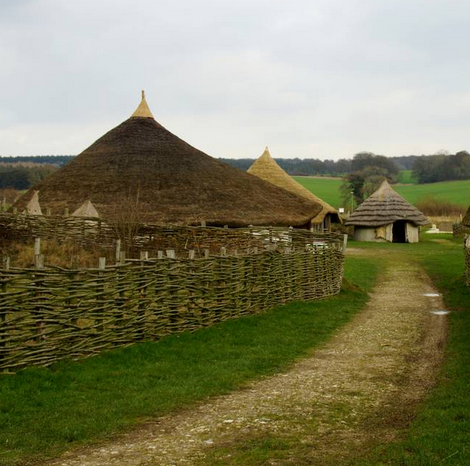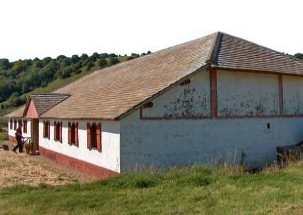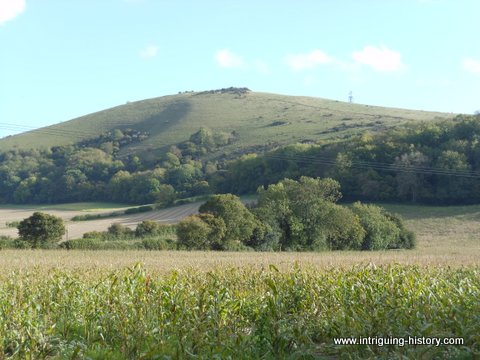Butser Ancient Farm is a great example of a living history project that started over forty years ago and continues with its purpose to experiment and test theories on how people lived in ancient times.
Of course the work at Butser Ancient Farm has developed and expanded over time. It has moved location three times and for many of those that live nearby, they probably can’t remember a time when Butser Hill and its environs didn’t have an Iron Age hut in the landscape.
Butser Hill itself is an ancient landscape. The rounded downland hill is one of the highest points in Hampshire. Apart from clusters of old yew trees, their are no trees growing on the slopes, they were chopped down a long time ago by ancient people who made the hill their home. The grass is cropped short by sheep, as it has been for a thousand plus years and the area is a site of special scientific interest in respect of the flora and fauna that exist on the chalklands.
The name Butser comes from the Old English Bryttes Oran, meaning Briht’s slope. Oran or Ora is Old English for flat topped hill and/or steep slope, both of which apply to Butser Hill.
The hill has a mixture of Iron Age ditches and banks whose purpose is unclear but of course point to human habitation on the hill.
So what is Butser Ancient Farm all about?
In 1970 the Council for British Archaeology decided to establish an experimental base where theories about how society worked in Iron Age times could be tested with on the ground work. In 1972, work started in earnest, Iron Age houses were built, ancient breeds of livestock introduced and the experiments began. The site of the community moved around the hill but is now.
The story of Butser Ancient Farm began with a decision in 1970 by the Council for British Archaeology to establish a working ‘ancient farm’ where archaeologists could experiment to test their theories on how people lived in Iron Age times.
The project was run by Dr Peter Reynolds, whose enthusiasm for the project never waned. The project gathered pace, the discovery of a Bronze Age house in amongst barrows in Pimperne in Dorset, provided the impetus to the project to try and reconstruct it on the site. This occurred in 1976. It was dismantled in 1990 and as much investigation was carried out in the process of deconstructing it as in its construction and use. It led to new theories about evidence from post holes, the major part of archaeological evidence from Iron Age/Bronze Age settlement.
A Roman villa has also been reconstructed, based on the wing of a villa excavated at Sparsholt in Winchester and experimental archaeology continues on it and the rest of the farm.
Butser Ancient Farm operates on two levels as a tourist and educational attraction and as a base for experimental archaeology and on both counts it does a great job.
Finally an observation, the farm with its roundhouse and animal enclosures look as though they belong in this downland landscape as much a part of the landscape today as they were several thousand years ago.



